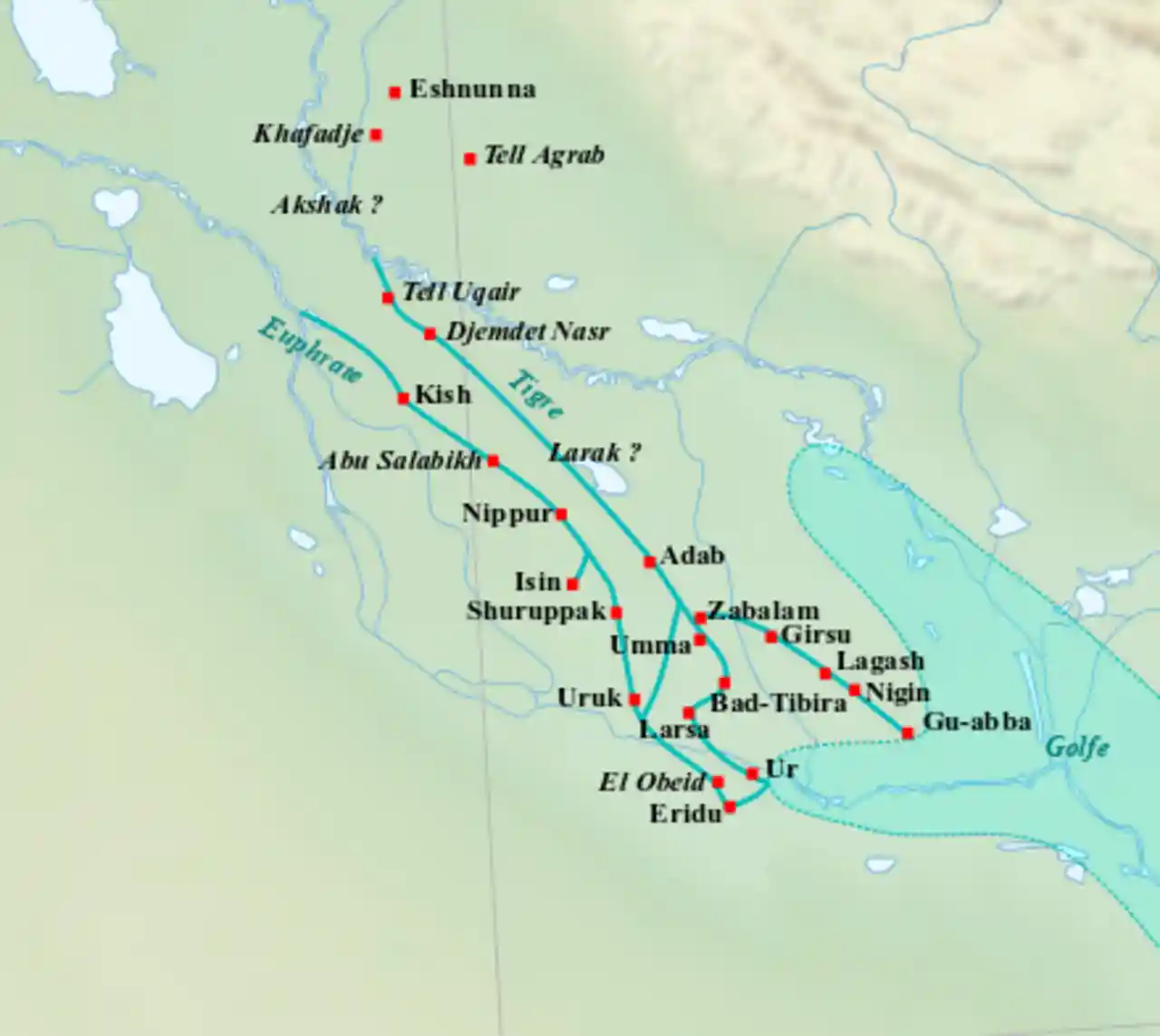 Abu Salabikh - Credit: Wikimedia Commons
Abu Salabikh - Credit: Wikimedia Commons
 Abu Salabikh - Credit: Wikimedia Commons
Abu Salabikh - Credit: Wikimedia Commons
The archaeological site of Abu Salabikh (Tell Abū Ṣalābīkh), around northwest of the site of ancient Nippur and about 150 kilometers southeast of the modern city of Baghdad in Al-Qādisiyyah Governorate, Iraq marks the site of a small Sumerian city that existed from the Neolithic through the late 3rd millennium, with cultural connections to the cities of Kish, Mari and Ebla.Pettinato, G., "L’Atlante Geografico Del Vicino Oriente Antico Attestato Ad Ebla e Ad Abū Şalābīkh (I)", Orientalia, vol. 47, no. 1, pp. 50–73, 1978Pomponio, Francesco, "Notes on the Lexical Texts from Abū Salābīkh and Ebla", Journal of Near Eastern Studies, vol. 42, no. 4, pp. 285–90, 1983 Its ancient name is unknown though Eresh and Kesh have been suggested as well as Gišgi.Cohen, Mark E., “The Name Nintinugga with a Note on the Possible Identification of Tell Abu Salābīkh", Journal of Cuneiform Studies, vol. 28, no. 2, pp. 82–92, 1976 Kesh was suggested by Thorkild Jacobsen before excavations began.Biggs, Robert D., "An Archaic Sumerian Version of the Kesh Temple Hymn from Tell Abū Ṣalābīkh", vol. 61, no. 2, pp. 193-207, 1971 The Euphrates was the city's highway and lifeline; when it shifted its old bed (which was identified to the west of the Main Mound by coring techniques), in the late third millennium BC, the city dwindled away. Only eroded traces remain on the site's surface of habitation after the Early Dynastic Period. There is another small archaeological site named Abu-Salabikh in the Hammar Lake region of Southern Iraq, which has been suggested as the possible capital of the Sealand dynasty.Roux, G., "Recently Discovered Ancient Sites in the Hammar Lake District-Southern Iraq", Sumer, XVI, no. 1-2, pp. 20-31, 1960 Read more on Wikipedia
Source: en.wikipedia.org